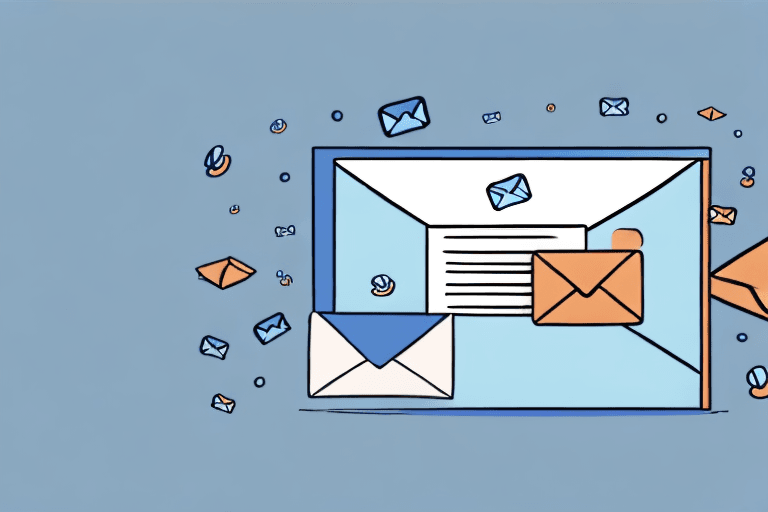Email surveys can be a powerful tool for gathering valuable feedback and improving customer engagement. However, to get the most out of your survey emails, you need to create an effective email template that not only looks great but also encourages your audience to respond. In this article, we'll explore the key components that make up an effective survey email template, as well as how to craft the perfect survey questions.
Understanding the Importance of Survey Emails
Before we dive into the details of creating an effective survey email template, it's important to understand why survey emails are so important. There are several benefits to using surveys to gather feedback from your audience:
Gathering Valuable Feedback
Surveys allow you to gather valuable feedback from your audience, such as customer satisfaction, product feedback, and more. This feedback can help you identify areas where you're doing well and where you need to improve.
For example, if you're a restaurant owner, you can send out a survey to your customers asking them about their dining experience. By gathering their feedback, you can identify which dishes are popular and which ones need improvement. You can also get insights into the quality of your service, ambiance, and overall customer experience.
Improving Customer Engagement
By sending surveys to your customers, you're showing that you care about their opinion and want to hear from them. This can help improve customer engagement and create a stronger relationship between your brand and your audience.
For instance, if you're a fashion retailer, you can send out a survey to your customers asking them about their preferences and what they would like to see in your store. By doing so, you're not only gathering valuable feedback but also engaging with your customers and making them feel valued.
Identifying Areas for Improvement
Surveys can also help you identify areas where you need to improve, whether that's in your products, services, or customer support. With this knowledge, you can make informed decisions about how to improve your business and make your customers happier.
For example, if you're a software company, you can send out a survey to your customers asking them about their experience with your product. By gathering their feedback, you can identify any bugs or glitches in your software and address them promptly. You can also get insights into the features your customers would like to see in future updates.
In conclusion, survey emails are an effective way to gather feedback from your audience, improve customer engagement, and identify areas for improvement. By creating a well-designed survey email template and sending it out to your customers, you can gain valuable insights into your business and make data-driven decisions that will help you grow and succeed.
Key Components of an Effective Survey Email Template
Now that we've explored the importance of survey emails, let's take a closer look at the key components that make up an effective email template:
A Compelling Subject Line
The subject line is the first thing your audience will see when your survey email lands in their inbox. A compelling subject line will make them more likely to open and respond to your survey. Make sure your subject line is clear, concise, and attention-grabbing.
For example, if you're conducting a customer satisfaction survey, your subject line could be "We Want to Hear from You: Take Our Customer Satisfaction Survey Today!" This subject line clearly communicates the purpose of the email and encourages the recipient to take action.
Personalization and Customization
Personalizing your survey email can help make it more effective. Consider using your recipient's name in the email, or tailoring the survey questions to their interests or preferences. This can help make the survey feel more relevant and engaging.
For instance, if you're sending a survey to your customers, you could personalize the email by including their name in the greeting. You could also tailor the survey questions to their recent purchases or interactions with your company.
Clear and Concise Messaging
When crafting your survey email, make sure your messaging is clear and concise. Use simple language and avoid using jargon or technical terms that your audience may not be familiar with. Keep your email focused on the purpose of the survey and what you hope to achieve with it.
For example, if you're conducting a survey to gather feedback on a new product, your email should clearly communicate that you're looking for feedback on the product. You could also provide some context on why you're conducting the survey and how the feedback will be used to improve the product.
Visually Appealing Design
A visually appealing design can make your survey email stand out in a crowded inbox. Use colors and graphics that align with your brand and make your email visually attractive. Make sure your email has a good balance of text and images, so it doesn't feel too overwhelming or cluttered.
For instance, you could use your brand's colors in the email design and include images of your product or service. You could also use bullet points or numbered lists to break up the text and make it easier to read.
Mobile-Friendly Format
More and more people are reading their email on mobile devices, so it's important to make sure your survey email is mobile-friendly. This means making sure your email is easy to read and interact with on a smaller screen, with clear and easy-to-click buttons or links.
You can make your survey email mobile-friendly by using a responsive email template that adjusts to different screen sizes. You should also make sure your buttons or links are large enough to be easily clicked on a smaller screen.
By incorporating these key components into your survey email template, you can increase the likelihood that your audience will open, read, and respond to your survey. Good luck!
Crafting the Perfect Survey Questions
Now that you have an effective survey email template, it's time to focus on crafting the perfect survey questions. Surveys are a great way to gather valuable insights from your audience, but it's important to ensure that your questions are well-crafted and relevant to your overall goals.
When creating your survey questions, there are several things to keep in mind. Here are some tips to help you create effective survey questions:
Types of Survey Questions
There are several types of survey questions, including multiple-choice, rating scale, open-ended, and more. Each type of question has its own advantages and disadvantages, so it's important to choose the types of questions that will provide you with the most valuable insights.
Multiple-choice questions are great for gathering quantitative data, while open-ended questions can provide more nuanced insights. Rating scale questions can also be useful for measuring attitudes or opinions on a particular topic.
Balancing Open-Ended and Closed-Ended Questions
Both open-ended and closed-ended questions have their own advantages. Closed-ended questions are easy to answer and can be quantitatively analyzed, while open-ended questions can provide more detailed and nuanced insights.
When crafting your survey questions, it's important to balance the two types of questions to get a well-rounded understanding of your audience. You may want to start with closed-ended questions to gather quantitative data, and then follow up with open-ended questions to gather more detailed insights.
Ensuring Clarity and Relevance
Your survey questions should be clear and easy to understand. Avoid using complicated language or technical jargon, and make sure that each question is relevant to the overall purpose of the survey.
When crafting your questions, put yourself in your audience's shoes. Will they be able to understand the question quickly and easily? Is the question relevant to their experiences or opinions?
Limiting the Number of Questions
While you may have a lot of questions you want to ask, it's important to keep your survey short and sweet. Long surveys can be overwhelming for your audience and may lead to lower response rates.
Try to limit the number of questions to a manageable amount. Focus on the most important questions that will provide you with the most valuable insights. You can always follow up with additional surveys or focus groups if you need more information.
By keeping these tips in mind, you can create effective survey questions that will provide you with valuable insights into your audience's opinions, attitudes, and experiences.
Conclusion
Creating an effective survey email template can be a powerful tool for gathering valuable feedback from your audience and improving customer engagement. By including key components like a compelling subject line, personalization, clear messaging, visually appealing design, and mobile-friendliness, you can create a survey email that stands out and gets results. And by crafting the perfect survey questions, you'll be sure that you're gathering the most valuable insights from your audience to make informed decisions about your business.




